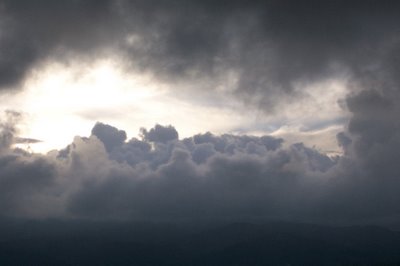Listening to Earth |
Permalink
 Recently I have been listening to a stream coming from NASA, an online VLF reciever.
Recently I have been listening to a stream coming from NASA, an online VLF reciever.The reciever, which is basically some sort of antenna, works only to recieve certain energy frequencies we cannot hear. Those energy frequencies come from the atmosphere, but originate from thunderstorms and lightning, or other sources. The energy generated from lightning travels through the atmosphere and collides with the ionosphere - a section of the atmosphere where rays from the sun break down molecules to form oxygen and other compounds for us and other beings to breathe - where it bounces to reach to other places of the Earth.
The VLF reciever detects the energy from lightning and converts the frequencies to sounds we are able to hear.
What we can hear from the stream, basically, are spherics. Spherics is short for atmospherics, and they come from thunderstorms. They sound like bacon frying, a popping sound.
But if the energy goes quite far away from the source, its frequencies change and they become either tweeks or whistlers. Tweeks are like spherics, but sound like short, quick beeps. Whistlers come from energy that has gone even further than tweeks, and they sound like descending tones that last for a second or two.
I haven't heard whistlers, only spherics and tweeks. It's like listening to the Earth!
There is another independent site where you can even hear meteorites burn up in the atmosphere. They sound like small hums, squeeks or beeps, caused by the elements dispersed during defragmentation upon entry. Weird.
The link to the VLF reciever site is the following: http://www.spaceweather.com/glossary/inspire.html
I lost the link to the Meteor entry stream, I'll look for it soon.






0 Comments:
Post a Comment
<< Home